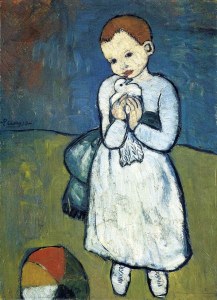It’s a dream shared by lots of people – to write a book.
Perhaps it starts with the scary stories you spin to terrify your younger brothers and sisters? Some of us have spun such tales since childhood.
I remember once convincing my youngest sister, then two years old, that we had been on our seaside summer holiday while she had sat on the toilet all week – she was sitting there at the time.
I described many incidents and all the fun things we’d done. I kept spinning and spinning the story until I’d quite convinced her. Fortunately, she was too young to get really upset, but the memory still makes me squirm a little.
Or it did until my husband told me how as a scout leader he used to drive the younger scouts in his charge to terrified tears with stories of nasty creatures roaming the ink-black scout campsite with murderous intent.
“Were you a sixer?” I asked. “Yeah,” he said, not at all shame-faced. A sixer is the leader of a small scout group. “You weren’t very responsible then,” I commented, feeling very Hermione Grangerish (the proper little girl from the Harry Potter books).
I think I’ve stumbled across something here… J K Rowling’s magical children’s books are delightfully terrifying. Her young readers curl up their toes, mouths open, holding their breath as they listen entranced to her stories. Rather like the small terrified scouts did – and my siblings too, curled up tight under the bed clothes.
Just pretend
I think writing starts with this: the desire to express yourself. Sometimes that desire manifests as scary stories for younger kids.
But, sadly, what comes so naturally to us as children doesn’t come so easily once we’ve grown up. Part of the trick in writing stories as a grown-up seems to be to tap into that free-floating imaginative mindset that comes to naturally to children.
So, how do you do it?
Just pretend.
I hit on this because I’ve always been a bit of a day-dreamer, but it seems research backs me up. One website, Big Think, suggests drawing monsters to help get the creativity ball rolling. In other words: play just like a child.
In ‘Killing Creativity: Why Kids Draw Pictures of Monsters & Adults Don’t’, Big Think discusses The Monster Engine, a book by comic-book artist Dave DeVries that sees him turn children’s drawings into realistic paintings.

Let’s pretend! Children draw, paint and write playfully – they can teach grown-ups a lot abut how to be creative
The idea is to not be afraid to create like a child. Psychologists Darya Zabelina and Michael Robinson suggest a simple trick for doing this: think like a seven-year-old.
‘You are 7 years old. School is cancelled, and you have the entire day to yourself. What would you do? Where would you go? Who would you see?’
This is what they asked one group of test subjects. A second group was asked the same question – minus the first sentence. Much less fun. You can imagine the results.
Ideastogo delves into similar research and reaches a similar conclusion – you have to tap into the playful childlike part of yourself to create. And pretending to be someone else – Batman, a character in a fairy tale, or whatever you fancy – is one way to get in touch with your childlike creative ability.
Albert Einstein knew this. He said: “To stimulate creativity, one must develop the childlike inclination for play.”
And Pablo Picasso said: “Every child is an artist. The problem is how to remain an artist once we grow up.”
Writing is as much an artistic pursuit as drawing or painting, or dreaming up new theories of how the universe works.
Daydream believer
So, why write about writing? Because how a book is made can be as interesting as the book itself. Lots of DVDs feature fascinating material describing how the film shown was made. I started writing about writing in ‘Murder Your Darlings’ a while ago now. I want to alter course slightly and use it o describe the journey of a book – my book.
The story I am writing is a children’s story, but that’s all I’m going to say about the actual tale. Describing it would prevent me writing it. It seems we only have the capacity to tell a story once – we lose the vital freshness if we tell it more than once.
However, here is what happened a while back: I woke up one morning and the germ of my story was there. That doesn’t mean the thousands of words I have written since have come easily, but the relaxed, playful state I was in when the idea came to me was the reason it came – the only reason. Which is why this first ‘story’ post is about play – and how valuable it is.
I would like to share my writing journey with you. And if it helps you write your own story all the better. Lots of us want to create, to write, to play…
So, let’s start by pretending we’re seven again.
